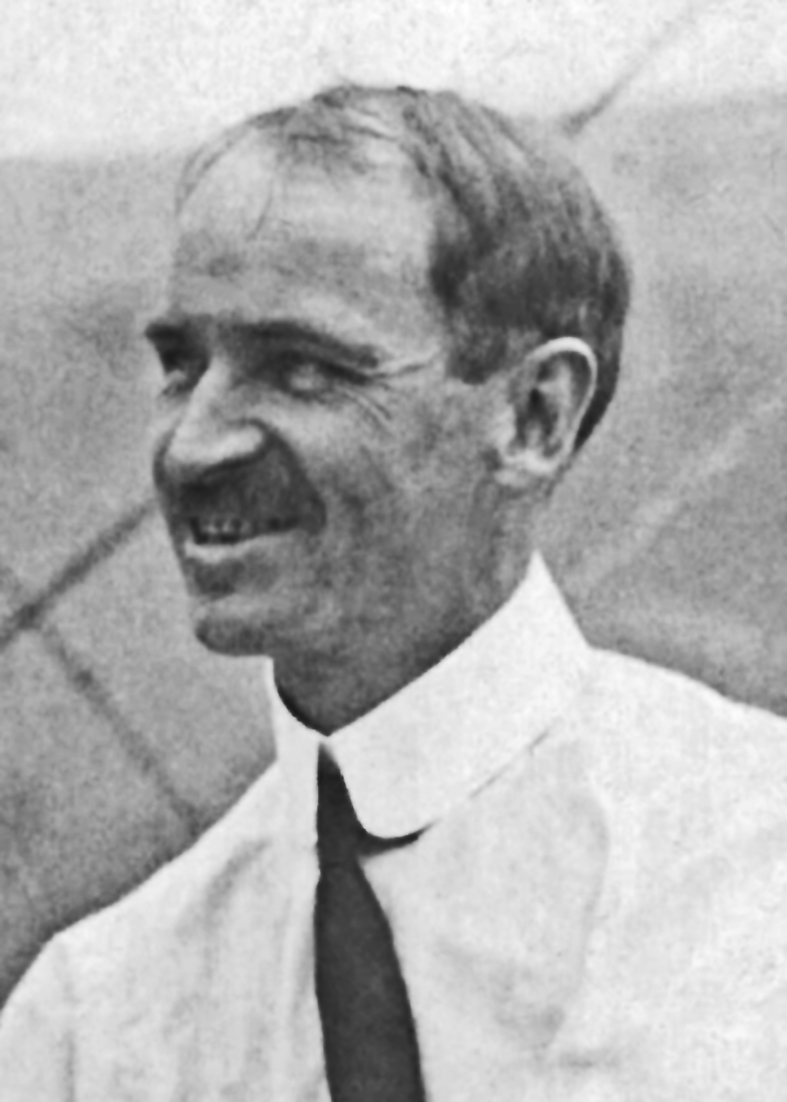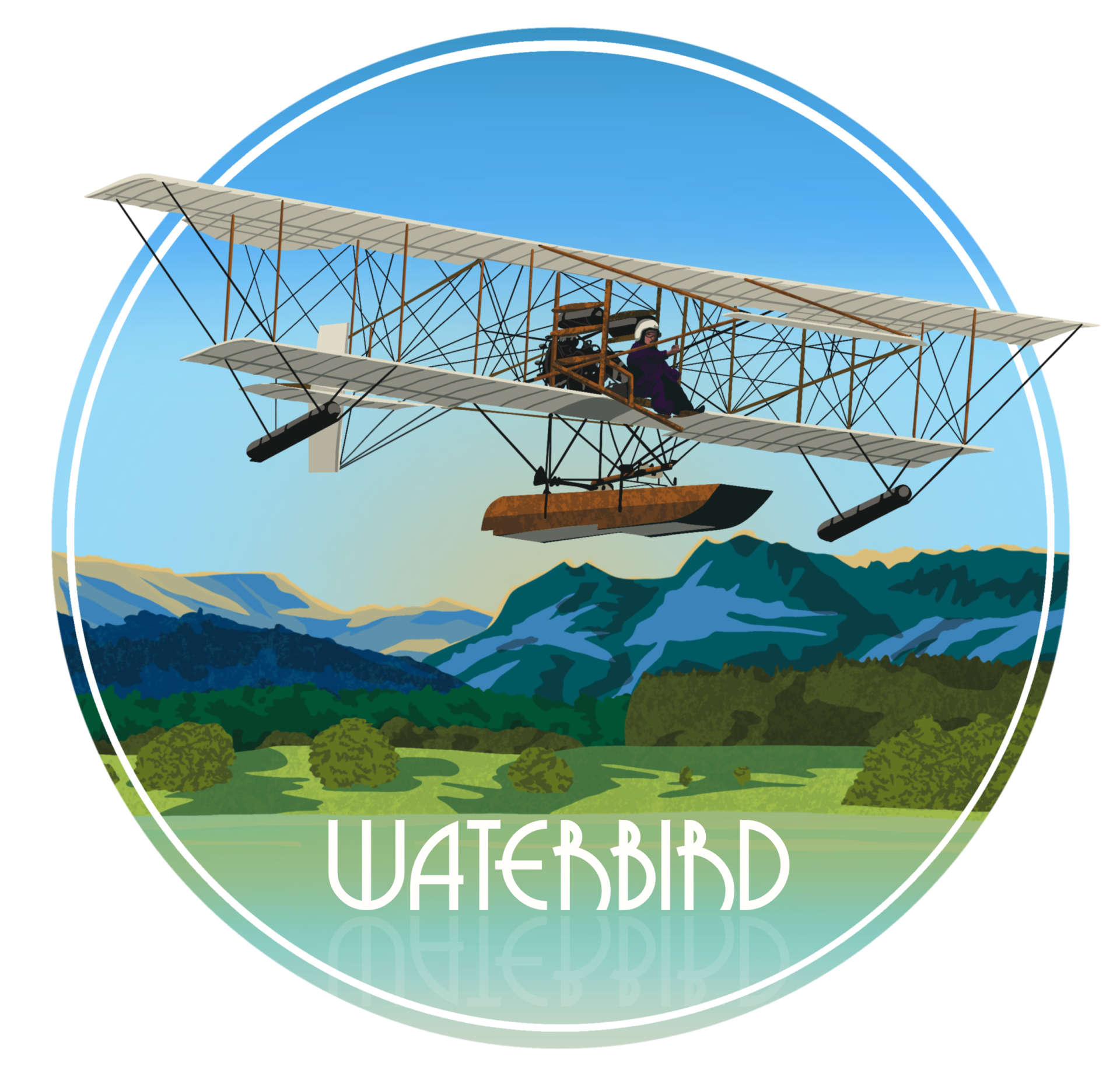Glenn Hammond Curtiss (1878 – 1930)

On 26 January 1911, Glenn Curtiss made the first ‘practical’ hydro-aeroplane flight at North Island, San Diego Bay, California. As a consequence, Edward Wakefield ended his negotiations with A. V. Roe & Co for a Blériot-type machine. Arrangements were then made for an Avro Curtiss-type, which when converted into a hydro-aeroplane at Windermere was known as Waterbird.
On 25 November 1911, Waterbird made the first successful flight by a hydro-aeroplane outside of France and America.
Curtiss and Wakefield shared the motivation for hydro-aeroplanes of being able to land on water in safety and also for the purpose of military scouting, rather than as an offensive weapon. Neither had an engineering degree, both working by trial and error, but had extraordinary aptitude with experts around them.
Henri Fabre had achieved the first successful flight from water on 28 March 1910 near Marseilles, but his hydravion design was not considered to be of practical use. Both Curtiss and Wakefield visited Fabre prior to their success.
1 month later, the Triad (land-sea-air) was flown by Curtiss, which was the first successful true amphibian. He added retractable wheels under the lower wings and a nosewheel to the bow of the float. ‘… with the extra weight of the wheel lifting gear the pontoon, 14′ x 2′ x 1′, did not afford sufficient flotation to enable the [Triad] to rise from the water’. – Report by Lieutenant Theodore Ellyson, 31 March 1911.
Design and dimensions
The Curtiss pontoon float had been designed to ride through waves of the sea, shaped so that it would tend to rise on the surface. (See photograph at the top of this page.) Choppy water would help overcome the suction effect of water on the float.
Initially, the main float was 5 feet long by 6 feet wide (where the rear wheels of the Model D landplane had been), with a 30 inches long float ahead (where the front wheel had been).
‘We finally made one long, flat-bottomed, scow-shaped float, twelve feet long, two feet wide, and twelve inches deep.’ – The Curtiss Aviation Book by Curtiss and A Post.
‘But the great fuss stirred up by these original floats as the machine got underway preparatory to rising, and the fact that they were not suited to anything but a calm surface, caused them to be discarded shortly afterward. They were replaced by a large single float, 12 feet long by 2 feet wide and 12 inches deep. … Trials showed an astonishing difference in the amount of disturbance, practically no commotion being caused even when the machine was just getting underway, while the engine rose from the surface more readily the before.’ – Practical Aeronautics by Charles B Hayward.
‘Curtiss roughed out a design for a single, narrow pontoon with a flat bottom. Robert H Baker, who ran a local machine shop, fabricated the 12-foot-by-2-float in a matter of a few days. More the result of experience and intuition than abstract hydrodynamic theory, the float was carefully contoured so that as the airplane gained speed it planed at the right attitude for takeoff. The pontoon was built up of spruce strips over a spruce frame and weighed less than half that of the tandem floats of the earlier configuration.’ – Glenn Curtiss and the Empirical Origins of Naval Aircraft Design by W F Trimble.
These were the dimensions adopted for Waterbird, but the Waterbird float was ‘stepped‘.
Curtiss flying boat No. 2, nicknamed the Flying Fish, had a full-length flat-bottomed fuselage, rather than a central float. However, it would not leave the water until a step was added in July 1912.
A history of the development of the step is here.
On 28 June 1911, Lieutenant John Towers visited the Curtiss premises concerning the 2 Navy hydro-aeroplanes being built. ‘Curtiss had sketched the plans himself with a carpenter’s pencil on the white-washed wall of the shop. Those were the only plans and that’s what they were using to build those aeroplanes! … Unfortunately a newly hired janitor decided he’d really clean up, and the first thing he did was to wash all that stuff off the wall! When they came in Monday morning, there weren’t any plans left for the plane that they were building, and Curtiss couldn’t remember what they were like!’ – Admiral John H Towers by Clark G Reynolds.
2 Curtiss hydro-aeroplanes have been purchased by the US Navy and ‘found favor on account of their shift control, which consists of a movable wheel in front of the 2 aviators and mounted upon a vertical arm pivoted at its lower end so that it can be swung in front of either man’. – Scientific American magazine, 2 December 1911.
Patents
The Wright brothers submitted their first application for a US patent in 1903, when their first Wright Flyer was still being built. In 1906, they obtained a US patent for a ‘flying machine’.
On 14 September 1912, Curtiss applied for US Patent No. 1,104,036 for the Triad amphibian, which was granted on 21 July 1914.
On 4 June 1913, Curtiss applied for US Patent No. 1,142,754 for a flying boat, granted on 8 June 1915 – a red circle has been added to show the step.
On 18 November 1916, Curtiss Aeroplane & Motor Co applied for US Patent No. 1,269,397 for a pontoon float, granted on 11 June 1918.
The Wrights submitted patent infringement claims in France against Curtiss, but the proceedings took so long that the patents expired.
German courts decided against the Wright’s patent claims on the grounds that the principle of wing warping had previously been detailed. Curtiss’ German patent claim was invalidated by several French aeroplanes having previously used a similar aileron system.
In 1914, the Wright patent claims against Curtiss were upheld in America.
Curtiss seaplanes in Europe
The first American hydro-aeroplane flight abroad was made on 6 February 1912, when Hugh Robinson flew a Curtiss at Juan les Pins, France. – Aero magazine, 17 February 1912.
The first Curtiss seaplane, a version of the Model F, came to England in October 1913 and was based at Brighton, but Curtiss had to return to America to fight the 4th round of the Wright brothers’ patents court action.
In 1914, John Porte went to America to join Curtiss who had been commissioned to produce a flying boat capable of crossing the Atlantic and to claim the Daily Mail £10,000 prize, which was named America. However, World War 1 intervened.
On Porte’s arrival back in England, he entered the Royal Naval Air Service as a Squadron Commander at Royal Naval Air Station Hendon. Having been transferred to RNAS Felixstowe, he was given command in 1915. He obtained Admiralty permission to purchase 2 Curtiss flying boats, and there followed 62 Curtiss Small America and 71 Large America flying boats; Britain was Curtiss’ largest overseas customer during the War. Porte carried out many improvements and, during experiments on the Curtiss hulls, work began on the construction of large flying boats leading to the Felixstowe F-boats. The F-boats were essentially Curtiss; Porte’s principal contribution to the design was an improved hull.
On 20 May 1917, 2 ex-Windermere pupils, Flight Sub-Lieutenants Charles Morrish and Henry Boswell, whilst flying a Curtiss Large America H-12 flying boat, based at Felixstowe, were officially credited with the first sinking of a U-boat by the RNAS. Both received the Distinguished Service Cross.
A Felixstowe F.2A flying boat, based at Killingholme, shot down a Zeppelin on 10 May 1918, whilst under the command of Captain Cooper Pattinson of Windermere. Pattinson was awarded the Distinguished Flying Cross.
Felixstowe F.3 flying boat hulls were made by Borwick & Sons, boat builders of Bowness-on-Windermere, having been sub-contracted in 1918 by Dick, Kerr & Co Ltd of Preston.
The Aéro-Club de France began issuing Aviators’ Certificates from 1 January 1910, but the first 16 were retrospectively dated for aviators who had already demonstrated their abilities. So, Curtiss received Licence No. 2 dated 7 October 1909, having, for example, won the speed trophy race at the Reims Aviation Meeting on 28 August 1909 when he had been chosen to represent America.
On 8 June 1911, Curtiss was awarded Aviator’s Certificate No. 1 by the Aero Club of America.
Aviators’ Certificates in France, America and the UK were then recognised by the Fédération Aéronautique Internationale.
– ‘I got more pleasure out of flying the new machine over water than I ever got out of flying over land, and the danger, too, was greatly lessened.’ – The Curtiss Aviation Book.
